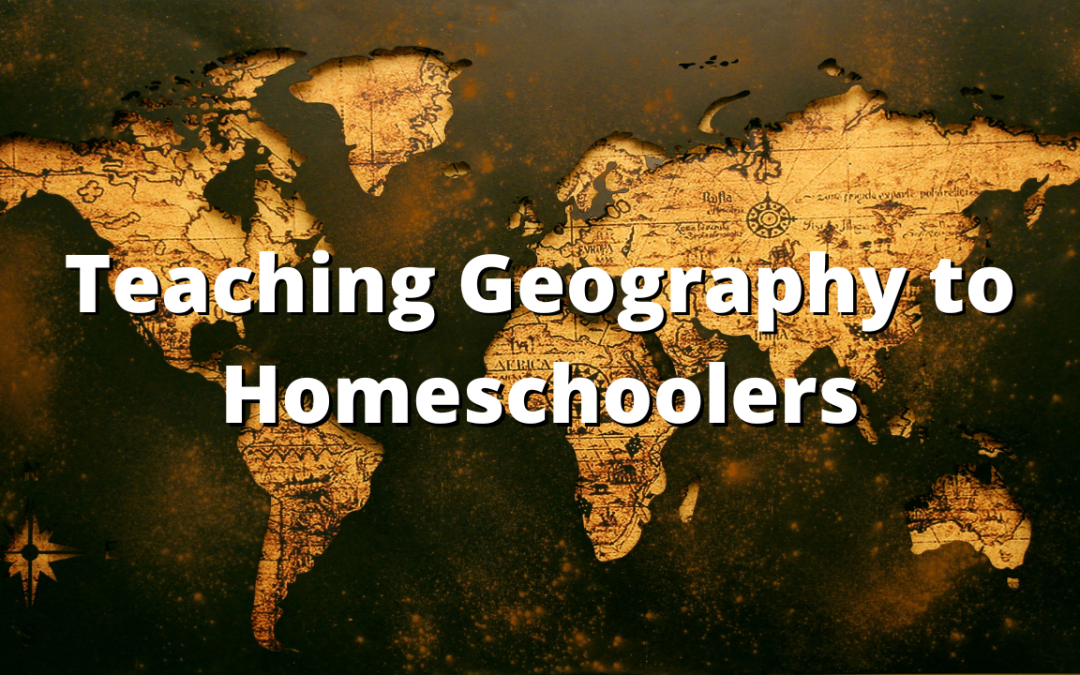Today will be the last in the series of six “Teaching Topics” articles that have been posted in this space over the past few months. Topics covered to date include:
- Textbook-free Math Instruction,
- Finding a Homeschool Community,
- Online Technology Classes for Homeschools,
- Civics Lessons for K to 12 Homeschools, and
- Homeschool Science for Kids.
Today we’ll be looking at Teaching Geography to Homeschoolers. Given all the programs now available to help your homeschoolers learn geography, teaching United States Geography has never been easier! This article will list some top-of-the-line geography programs that teach population demographics, state flags, location of significant U.S. geographical features and monuments, and lots of other great facts about our 50 states.
GETTING STARTED
Geography is not just the study of maps, state capitols, national boundaries, and national monuments and parks. Geography sometimes falls into the category of hit or miss subjects neglected in many homeschools. Some kids are interested in learning about places and cultures other than their own. It seems to be more common that most kids could care less about these things and so it becomes a push-and-shove proposition to get them to pay attention to the study of Geography. Fortunately, as a homeschool parent, there are lots of easy and practical ways you can teach geography to your homeschoolers.
WHAT IS GEOGRAPHY?
The Royal Geographical Society (RGS) is the United Kingdom’s professional body for geography. The organization supports geography and geographers across the world. RGS hosts a valuable site that offers a great definition of Geography and helps explain why geography is important as an area of study.
The RGS defines geography as follows:
- “Human geography concerns the understanding of the dynamics of cultures, societies, and economies. Physical geography concerns the understanding of the dynamics of landscapes and the environment.
- Geography provides an ideal framework for relating to other fields of knowledge. Geographers often contribute to the management of resources and environments.
- Geography is an education for life and for living. Learning through geography – whether gained through formal learning or through travel, fieldwork, and expeditions – helps us all to be more socially and environmentally sensitive, better informed, and more responsible as citizens.”
(SOURCE: Royal Geographical Society – Geography (rgs.org)
The National Geographic Society (What is Geography? | National Geographic Society) defines geography in this way:
“Geography is the study of places and the relationships between people and their environments. Geographers explore both the physical properties of Earth’s surface and the human societies spread across it. They also examine how human culture interacts with the natural environment and the way that locations and places can have an impact on people. Geography seeks to understand where things are found, why they are there, and how they develop and change over time.”
WHAT DO WE LEARN ABOUT BY STUDYING GEOGRAPHY?
- The connections between the larger world and our own community,
- Global and Local ways the world is changing – how and why these changes are happening,
- The pressures our natural environments face every day,
- How what we do as individuals contributes to world changes, and
- We learn more about the places where we live and work.
IDEAS FOR TEACHING GEOGRAPHY TO K TO 12 HOMESCHOOLERS
-
- Encourage your student to become familiar with the geography of your local area.
- Assign your kids to make “memory maps” of their own neighborhood.
- Use your local library’s educational resource services.
- Use games, videos, and online geography lessons (see “Resources,” below).
- Encourage your students to draw maps based on favorite stories (such as The Hobbit and The Wizard of Oz).
- Assign your kids to read books that take place in other areas of the world (A great list of geography books for kids: Homeschooling Books (homeschooling-ideas.com) ).
- Read information/write reports about various geographical features (volcanoes, islands, rivers, etc.)
- Assign your homeschool students to make up geography-based games.
- Work with your kids to cook culinary specialties from around the U.S. or other world locations. Assign students to write a report about the featured culinary location.
CLOSING THOUGHTS
There’s more than you imagine included in the study of geography. Geography reminds us of our connections to other human beings and places we are not familiar with. Geography helps us understand how physical landscapes have shaped human history over eons of time.
Studying Geography will help your homeschool student understand the planet’s movement, changes, and systems. Current relevant topics such as climate change, water availability, and distribution of natural resources, are more easily understood by kids who study geography.
“The study of geography helps us to understand relationships between cultures. Ultimately, this leads to a more accepting and culturally aware society.” (SOURCE: Why Is Geography Important? There’s More Than You Think (uopeople.edu))
USEFUL RESOURCES
Online Homeschool Education Leader – Providing Only the Best (globalstudentnetwork.com) – This site features a wide variety of online programs for Elementary, Middle School and High School students. Visit the site, click on PROGRAMS, and visit each grade level to find options for teaching geography to your kids. There’s a chat function, so if you aren’t finding what you need, try the chat page.
Introduction to Geography’s most important concepts (slideshare.net)
Teaching Geography in your Homeschool (homeschooling-ideas.com)
Geography Map Games – Play Online (playgeography.com)
World Games | World Geography Games Online (world-geography-games.com)
Kids Geography Books (goodreads.com)
Best geography books for children | TheSchoolRun
Good Children’s Books About Geography – Imagination Soup
What are Maps? – Learn & Grow Kids Geography Lesson | LeapFrog – YouTube
Our Heritage | Geography for Kids | Periwinkle – YouTube
